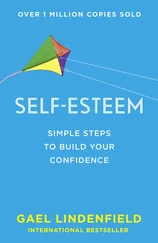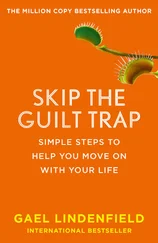– the big ‘booze-up’ which leaves you nauseous and depressed the next day
– the double portion of chocolate cake which leaves you feeling bloated and 1lb heavier
– the trip to the cinema to see a horror film which haunts your dreams for weeks afterwards
– an action-packed holiday which leaves you exhausted and financially bankrupt
– a night out with a ‘friend’ who specializes in ‘isn’t it awful’ conversations
– an extravagant new dress which will hardly see the light of day with your kind of lifestyle.
So, when you are doing the next exercise check that you do not sabotage your chances of getting some real nurturing for yourself and certainly do not choose to do things which may masquerade as treats but are merely obsessional, conditioned responses to an addiction. For example: the cigarette to the nicotine addict, the whiskey to the alcoholic, the quiet evening in to the agoraphobic, or the afternoon in town to the shopaholic.
One of the common ways of sabotaging our chances of getting the nurturing we deserve and need is to depend too heavily on others to give it to us. As women, this often means expecting or hoping for a man to come up with the goodies – the well-timed cuddle, the listening ear, the box of chocolates or the surprise holiday in the Bahamas. Don’t knock yourself for this bad habit because the Prince Charming myth has infiltrated even the most liberated female subconscious – just recognize your pattern and replace it with some self-nurturing action over which you have control.
Make a list of activities which you know or believe could refresh you and help you to feel at peace with yourself and the world. For example:
– a walk in the park
– a long hot bath
– an aromatherapy massage
– an evening at home watching a video
– a Mozart piano concerto
– a Julio Iglesias tape
– pottering in the garden
– some early nights with a good book
– etc.
Make a list of treats which you already give yourself or could begin to give yourself as a reward for doing well or as encouragement when the going is tough. For example:
– a trip to the cinema
– an Indian meal
– afternoon tea at …
– a new book or tape
– a week-end away
Draw up a healing action plan for yourself for the next four weeks, allowing at the very least half an hour a day to be devoted to one of the above activities or treats. If possible take at least one full day’s holiday so that you can spend the entire time nurturing yourself.
If you have been very hurt and deprived by your past, you may need to consider doing an additional programme that stretches over many months if not years. Others may just need to do some short-term corrective work in certain areas, but I doubt if there is anyone who couldn’t benefit from doing something. But remember, don’t set yourself up for failure by giving yourself unrealistic tasks or goals.
Remember: we cannot always control the events which hurt us or the people who disappoint us, but the resultant reservoirs of emotional baggage are entirely at our disposal!
Chapter 4 Kicking the negative thinking habit
In this and the next two chapters, I will discuss ways in which you can alter your persistent negative habits in the three areas of thinking, feeling and habit. But firstly, let’s look generally at the subject of breaking habits. The following are some guidelines I have drawn up which you can use to set ‘programmes’ for yourself if you want to do some serious habit kicking.
Guidelines for changing habits
1. Check your motivation– it is possible, but certainly not easy, to break most habits, so we certainly need to be able to see clearly the carrot at the end of the stick. We need to ask ourselves ‘Who or what stands to gain if I crack this habit?’
For example:
If we ourselves are likely to be the beneficiaries:
‘Am I really worth all this effort?’
‘Do I love myself enough?’
and if others will benefit:
‘Do I love/like or approve of them enough?’
If an issue or cause is likely to gain from our efforts:
‘Do I really feel this is worthwhile?’
2. Examine the habit– sometimes we are so ashamed of our bad habits that we try to pretend that they don’t exist. If someone brings up the subject, our guilt often stops us from having a rational, constructive discussion, and we just fob people off with ‘I know, I know, I know, but I don’t want to talk about it!’ The result of this is that we don’t give the habit too much thought until the big crises occur and we lose our friends, job, marriage, health, etc.
It is important to do a detailed analysis of the habit so that we can identify the precise stimuli which sets it off and become aware of what positively reinforces it (i.e. gives us a pay-off) and what negatively reinforces it (i.e. punishes us).
So we need to ask ourselves and others:
‘When am I most likely to …?’
‘With whom do I most often …?’
‘In which places am I least likely to …’
and the classic question for women –
‘At what time of the month …?!’
3. Set goals– and make sure that these are realistic. We already know that negative thinking people regularly set themselves up for failure. They are hard taskmasters for themselves as well as for other people, demanding impossibly high standards and constant perfection. They often want to tackle the most difficult problems first and are not in favour of easy stages.
So we need to check that we are starting our programme with a task which has a strong chance of success and that we have a series of goals which will get progressively harder (but also progressively more rewarding) as we move on.
4. Practise– if possible this should be done in a ‘safe’ place first, that is, in situations or with people where there is as little risk as possible to your relationships, finances, self-esteem, etc.
Two alternatives to practising in real life are role-play and guided fantasy (see Chapter 13). Other options might be preparing and reading scripts at home or using a tape recorder or video to give you feedback and practice.
5. Monitor your progress– you need to have some system for regularly checking how you are getting on. This could be entries into your diary, a wall-chart, or weekly discussions with friends or a self-help group. Whatever system you choose, make sure it is fool-proof against cheating!
6. Reward yourself– it may be a long time before you reach your desired carrot so you will need to find some way of encouraging and supporting yourself along the route. We now know that rewards are much more effective than punishments in any learning process.
Make sure that the rewards you give yourself at each stage are appropriate and that you save the big treats for the harder habits.
Overcoming negative thinking
The quality of your thoughts determines the quality of your life .
Vera Peiffer
There are four steps which you can take to break your negative thinking habits and replace them with more positive patterns. These are:
1) Expose and confront your existing negative attitudes.
2) Adopt new positive approaches.
3) Expand your thinking powers.
4) Increase your exposure to positive thoughts.
Much negative thinking is essentially irrational – it is not based on well-considered facts and sound theories! It is directed by feeling and prejudice rather than logic and reason. Very often there can be some basis of truth in the arguments presented by this mode of thinking, but they rarely give the full picture. The process of censorship is often unconscious and is a habit ingrained over many years. We may be totally unaware of our discriminatory practices although sometimes the ‘madness’ of our thinking may be blindingly obvious to others. We may hear:
Читать дальше












